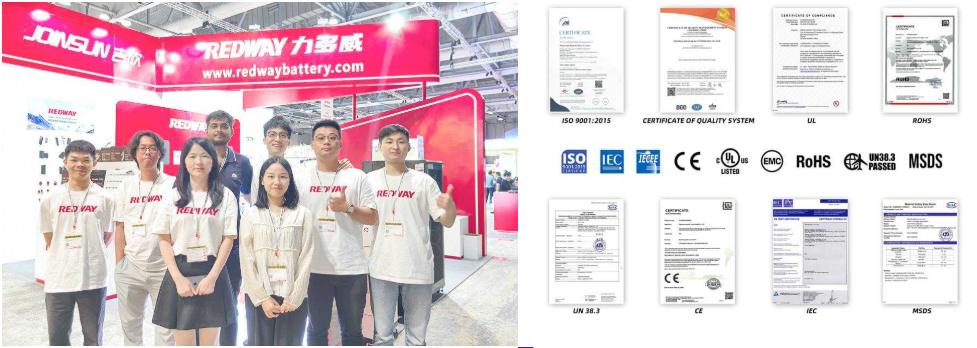Yes, you can put four 12-volt batteries in a 48-volt golf cart by wiring them in series, which adds their voltages together to reach the required 48 volts. This configuration is less common than six 8-volt batteries but simpler to maintain and can provide comparable performance if the batteries have sufficient amp-hour capacity.
What is the standard battery configuration for a 48-volt golf cart?
The standard configuration for a 48-volt golf cart typically consists of six 8-volt batteries wired in series (6 × 8V = 48V). However, four 12-volt batteries wired in series (4 × 12V = 48V) are also used. Another option is eight 6-volt batteries connected in series and parallel combinations to achieve the same voltage but with greater capacity and longevity.
How does wiring batteries in series work to reach 48 volts?
Wiring batteries in series means connecting the positive terminal of one battery to the negative terminal of the next. This adds the voltage of each battery while keeping the amp-hour (Ah) capacity the same as a single battery. For example, four 12-volt batteries in series produce 48 volts but maintain the Ah rating of one 12-volt battery.
Wholesale lithium golf cart batteries with 10-year life? Check here.
What are the advantages of using four 12-volt batteries versus six 8-volt batteries?
Four 12-volt batteries are simpler to install and maintain due to fewer batteries and cables. They often fit better in compact battery compartments and reduce weight. Six 8-volt batteries, however, typically provide better cycle life and deeper discharge capability, translating into longer battery lifespan and improved performance under heavier use.
Can the amp-hour capacity of 12-volt batteries affect golf cart performance?
Yes, amp-hour (Ah) capacity measures battery energy storage. To match the range and runtime of a six 8-volt battery system, the four 12-volt batteries must have sufficient Ah ratings, often around 150-200 Ah. Insufficient capacity reduces run time and may strain the batteries, shortening their lifespan.
Want OEM lithium forklift batteries at wholesale prices? Check here.
Chart title: Common Battery Configurations for 48-Volt Golf Carts
| Configuration | Total Voltage | Number of Batteries | Typical Ah | Advantages |
|---|---|---|---|---|
| Six 8-Volt Batteries | 48 Volts | 6 | 150-200 Ah | Better longevity, widely used |
| Four 12-Volt Batteries | 48 Volts | 4 | 150-200 Ah | Simpler setup, easier maintenance |
| Eight 6-Volt Batteries | 48 Volts | 8 | Higher Ah | Longer life, better deep cycling |
What should you consider when replacing golf cart batteries?
Match the voltage exactly (48V) and ensure the amp-hour capacity meets or exceeds the original setup to maintain performance. Use batteries designed for deep-cycle use in golf carts, and maintain proper water levels and terminal cleanliness for longevity. Mixing battery types or ages can lead to reduced efficiency or damage.
How does battery maintenance affect golf cart performance and lifespan?
Regular maintenance—checking electrolyte levels, cleaning terminals, equalizing charges, and preventing corrosion—maximizes battery lifespan and golf cart reliability. Improper care accelerates capacity loss and may cause early battery failure. Redway Battery advises following manufacturer maintenance protocols to optimize battery health.
Can Redway Battery’s lithium technology be used in 48-volt golf carts?
Yes, Redway Battery produces advanced lithium-ion batteries designed to fit standard 48-volt golf cart configurations. Their batteries offer higher energy density, lighter weight, longer cycle life, and faster charging compared to traditional lead-acid batteries, all while maintaining the required voltage and amp-hour capacity.
How do lithium batteries from Redway Battery compare to traditional lead-acid golf cart batteries?
Lithium batteries are up to 60% lighter, provide more consistent power output, and have a lifespan of 8-10 years versus 3-5 years for lead-acid options. Although the initial cost is higher, the total cost of ownership is often lower due to longevity and reduced maintenance. Redway Battery’s lithium solutions also offer built-in battery management systems for enhanced safety.
Are there wiring or safety concerns when using four 12-volt batteries?
Proper wiring is crucial: batteries must be connected in series to achieve 48 volts, with attention to polarity and secure connections to prevent shorts or electrical faults. Use insulated cables and terminal covers. Safety gear and adherence to manufacturer instructions protect users from hazards during installation or maintenance.
Chart title: Wiring Four 12-Volt Batteries for 48-Volt System
| Battery # | Connection | Voltage (V) | Notes |
|---|---|---|---|
| 1 | Negative to cart | 0 | System ground |
| 1 to 2 | Positive to Negative | 12 | Series connection |
| 2 to 3 | Positive to Negative | 24 | Series connection |
| 3 to 4 | Positive to Negative | 36 | Series connection |
| 4 | Positive to cart | 48 | Output voltage to drivetrain |
What are the benefits of choosing the correct battery configuration?
Selecting the right battery configuration ensures the golf cart operates efficiently with optimal range, power, and battery life. Proper sizing avoids overloading the system or frequent recharging. Utilizing high-quality batteries from Redway Battery maximizes performance while reducing downtime and maintenance costs.
Conclusion
Using four 12-volt batteries in a 48-volt golf cart is a practical and common solution, offering a simpler setup than six 8-volt batteries. However, ensuring batteries have adequate amp-hour capacity and are connected properly is vital for safety and performance. Redway Battery’s cutting-edge lithium technology provides enhanced durability, weight reduction, and deeper cycling capabilities suited for modern golf carts.
Redway Battery Expert Views
“Combining four 12-volt batteries to power a 48-volt golf cart is an effective approach when the batteries are matched correctly in terms of amp-hour capacity and maintenance,” explains a Redway Battery expert. “Our lithium battery products elevate this further by delivering longer life, consistent power, and lighter weight. Proper installation and upkeep, paired with superior battery technology, guarantee an outstanding golf cart experience.”
FAQs
Can you put four 12-volt batteries in a 48-volt golf cart?
Yes, connecting four 12-volt batteries in series achieves the required 48 volts.
Is it better to use six 8-volt batteries or four 12-volt batteries?
Six 8-volt batteries generally last longer, but four 12-volt batteries offer easier installation and maintenance.
What amp-hour capacity should the batteries have?
Typically, 150-200 Ah is recommended for reliable range and performance.
Can Redway Battery lithium batteries fit a 48-volt golf cart?
Yes, Redway Battery offers lithium batteries designed for standard 48-volt golf cart configurations.
What safety precautions are necessary when wiring batteries?
Always connect batteries in series with correct polarity, use insulated cables, and follow safety guidelines to prevent shorts or injuries.
How do you connect 4 batteries having 12V each to get 48V?
To achieve 48V, connect four 12V batteries in series. Attach the positive terminal of the first battery to the negative terminal of the second, repeat for the next batteries, and finally connect the open positive and negative terminals to the golf cart. Series wiring adds their voltages, giving a total of 48V for your golf cart’s electrical system.
How well do 4 12-volt batteries work in a golf cart?
Using four 12V batteries in a golf cart is possible, but not always ideal. This configuration reaches the necessary voltage, but it may result in shorter runtime and decreased longevity compared to six 8V batteries. Ensure the batteries are matched in type and age for best results, and monitor for potential imbalances or performance issues over time.
How many 12V batteries for 48V?
You need four 12V batteries connected in series to produce a 48V system. When connected this way, the total voltage sums to 48V, which matches the requirement for most modern golf carts. Always use batteries of similar age and condition to avoid performance issues and ensure safety.
How many batteries for a 48 volt golf cart?
A 48V golf cart can be powered by multiple configurations:
-
Six 8V batteries
-
Four 12V batteries
Both setups are common, but the six 8V option is traditional and may offer better overall cycle life and runtime, while four 12V batteries are easier to manage and replace.
What Are The Benefits Of 48 Volt Golf Cart Batteries?
48V golf cart batteries offer better efficiency and higher power output than lower voltage systems. Benefits include faster acceleration, longer driving range, ability to handle hills more easily, and improved energy usage, especially in lithium or advanced battery models. These batteries are also often lighter and require less frequent charging.
What Are 12 Volt Golf Cart Batteries Used For?
12V golf cart batteries can be used in battery banks for main propulsion in some carts or as auxiliary power sources. They are often found powering accessories such as lights, stereos, or other onboard electronics when not used for main vehicle drive.
How To Use 4 12 Volt Batteries In A Golf Cart?
To use four 12V batteries, connect them in series to achieve 48V total output. Install them securely, use properly rated cables, and ensure all batteries are identical in type and capacity. Check the cart’s battery tray and electrical compatibility before installing, and follow safety guidelines when making connections for reliable performance.
Can I Replace 6×8V Batteries With 4×12V Batteries?
You can replace 6×8V batteries with 4×12V batteries, matching the 48V requirement, but performance and lifespan may differ. Always check the amp-hour rating and ensure adequate fitment. Some carts may experience reduced range or power, as 8V setups generally provide higher overall capacity for longer runtimes.
What Is A 12V Deep Cycle Golf Cart Battery?
A 12V deep cycle golf cart battery is specifically designed for repeated discharge and recharge cycles, supplying steady power over longer periods. Unlike starter batteries, deep cycle types provide consistent energy for electric carts and are built for prolonged, continuous use.
Can I Use 3×12V Marine Batteries In My Golf Cart?
No, using three 12V marine batteries only produces 36V, which is insufficient for a 48V golf cart. Marine batteries may also not be ideally rated for deep-cycle applications common in golf carts. Always match voltage and battery type for safe and optimal cart performance.
What Is An 8 Volt Golf Cart Battery 6 Pack?
An 8V golf cart battery 6 pack consists of six 8-volt batteries wired in series to provide the required 48V system. This configuration is often used in golf carts, offering a balance between capacity, cycle life, and overall performance for consistent power delivery.
Why Switch To Lithium Golf Cart Batteries?
Switching to lithium batteries offers superior lifespan and much less weight compared to lead-acid types. Other advantages include faster charging, zero maintenance, steady power output, and higher energy efficiency. Lithium batteries also improve the golf cart’s range, reliability, and support more advanced onboard electronics.





